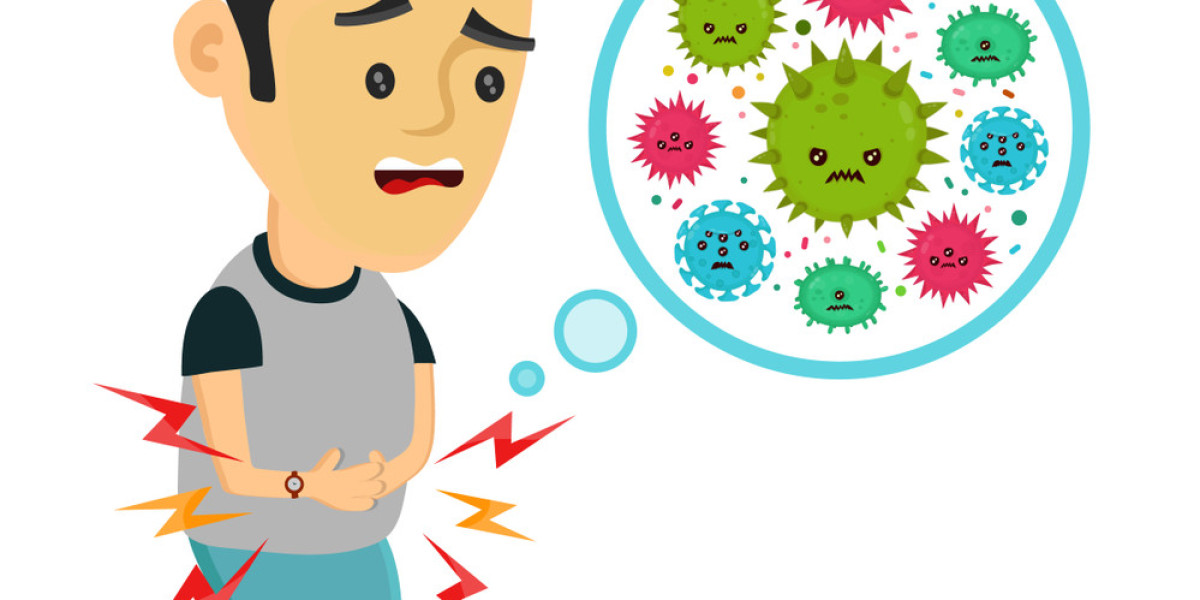Imagine walking into your house after a long day, expecting peace and order, only to discover a silent intruder has moved in. The cupboards are in disarray, the walls seem to whisper, and the air is heavy with unease. What’s worse? This intruder didn’t break the door; it slipped quietly through a trusted friend. That’s how Clostridioides difficile infection often operates. A silent invader in a space you thought was safe. For many, this isn’t just a momentary illness but a storm that lingers far beyond the first wave of symptoms.
Unlike fleeting flu, this bacterium doesn’t always leave quietly. It often comes when the body is already vulnerable, perhaps after antibiotics or hospitalization. Its resilience makes it one of the most unsettling infections to face. People often dismiss it as just “another stomach bug,” but beneath the surface lies a far more complicated story.
This isn’t about fearmongering; it’s about recognizing that C. Diff deserves more than a quick cure. It demands awareness, innovation, and compassion. In the quiet halls of hospitals, and sometimes even at home, this bacterium can turn recovery into a new battle. Let’s unpack the reality, from its stealthy causes to its stubborn symptoms, and how advancing clinical research may just be the shield we need.
The Hidden Enemy: Understanding C. Diff
C. Diff (Clostridioides difficile) is a bacterium that can cause severe diarrhea and inflammation of the colon, known as colitis. It’s often linked to recent antibiotic use, which disrupts the gut’s natural microbiome. When healthy gut bacteria are depleted, this opportunistic organism seizes the moment, thriving and releasing toxins that wreak havoc on the digestive system.
This infection doesn’t discriminate; it affects older adults in hospitals, patients on antibiotics, and even some healthy individuals. What makes Clostridioides difficile infection especially dangerous is its tendency to recur, creating a cycle that’s hard to break without proper treatment and monitoring.
Prevalence: A Growing Global Concern
Over the past decade, Clostridioides difficile infections have surged globally, especially in healthcare settings. According to public health data, hundreds of thousands of people in the U.S. alone are affected each year, with a significant portion experiencing recurring infections. Hospitals remain in the primary battleground, but community-acquired cases are also on the rise. This growing prevalence emphasizes the need for better awareness, advanced diagnostics, and effective treatment strategies. For many, this silent invader doesn’t just pass through — it leaves lasting scars on the body and mind.
Causes, Symptoms & Treatments at a Glance
| Causes | Symptoms | Treatments |
| Recent or prolonged use of antibiotics | Frequent watery diarrhea (3+ times a day) | Stopping the triggering antibiotic |
| Hospitalization or nursing home stays | Abdominal cramping and pain | Specific antibiotic therapy (e.g., vancomycin, fidaxomicin) |
| Weakened immune system | Fever and nausea | Probiotics to restore gut flora |
| Previous Clostridioides difficile infection infection | Dehydration | Fecal microbiota transplantation (FMT) in recurrent cases |
| Gastrointestinal surgery or chronic illness | Weight loss, fatigue | Hydration and electrolyte replacement |
These are just surface symptoms and treatments. In reality, Clostridioides difficile infection can spiral quickly if left untreated, leading to severe complications like toxic megacolon or sepsis.
Why a Quick Cure Isn’t Enough
When people first encounter C. Diff, they often expect a short course of antibiotics to fix the issue. But this bacterium is notorious for its persistence. Recurrence rates hover around 20–30% after the first infection and can climb higher with repeated episodes. Each recurrence can be more severe than the last, leaving patients trapped in a revolving door of discomfort and anxiety.
A quick cure may ease immediate symptoms, but without addressing the underlying imbalance in the gut microbiome, C. Diff can return stronger and more resistant. That’s why researchers and clinicians emphasize not just treatment but also prevention, education, and early intervention.
The Role of Gut Health
Our gut is an ecosystem. Think of it as a thriving forest where countless organisms coexist, keeping each other in check. When antibiotics are introduced, they act like wildfire clearing out both harmful and beneficial bacteria. C. Diff is like a hardy weed that thrives in this scorched landscape, quickly overrunning the weakened defenses.
Restoring gut balance is critical. Probiotic therapy, dietary adjustments, and newer interventions like fecal microbiota transplantation (FMT) are showing promise in not just treating C. Diff, but in preventing its return.
C. Diff Clinical Trials: Shaping the Future of Treatment
In recent years, C. Diff clinical trials have emerged as a powerful front in the fight against this stubborn bacterium. These trials aim to explore innovative therapies that go beyond conventional antibiotics.
Some trials focus on targeted microbiome restoration, introducing beneficial bacteria to rebalance the gut environment. Others investigate vaccines designed to prevent infection in the first place. Additionally, new antimicrobial agents are being developed to reduce recurrence rates and minimize disruption to the microbiome.
By participating in C. Diff clinical trials, patients not only access treatments by experts but also contribute to shaping the future of infection control and prevention. These trials offer hope that future generations may not have to face the same exhausting cycle of illness and recovery.
The Psychological Toll: Beyond the Gut
What often goes unspoken is the emotional weight of C. Diff. Patients describe feeling isolated, embarrassed, and anxious about their symptoms. The unpredictable nature of the infection and its recurrence can disrupt work, relationships, and daily life. Chronic infections can erode confidence and leave individuals feeling trapped in their own bodies.
Healthcare providers increasingly recognize the need for holistic care: not just treating the infection but supporting the person living with it.
Prevention: A Stronger Line of Defense
While treatments are improving, prevention remains the strongest defense against C. Diff.
- Hand hygiene: Washing hands with soap and water (not just sanitizer) is critical.
- Prudent antibiotic use: Only using antibiotics when necessary.
- Hospital infection control: Rigorous cleaning and isolation protocols.
- Strengthening the microbiome: Through diet, probiotics, and avoiding unnecessary disruptions.
Simple steps, when consistently applied, can prevent countless infections.
A Call for Awareness and Action
C. Diff isn’t just a medical problem; it’s a human one. It hides behind ordinary medical treatments, appearing when the body is least prepared to fight back. What makes it dangerous isn’t only its severity but its persistence, a quality that demands more than quick fixes.
The fight against this silent invader requires a multi-pronged approach: awareness, prevention, innovative treatments, and compassion for those affected. With continued research and clinical trial participation, we can push back against this resilient foe.
Final Thoughts
Like a quiet storm, C. Diff doesn’t always announce itself with fanfare but its impact can be life-altering. Recognizing its complexity is the first step to disarming it. This isn’t just about medicine; it’s about giving patients their lives back.
Through better understanding, advanced therapies, and clinical innovation, the narrative can shift from fear to empowerment. The intruder can be confronted and eventually defeated.






